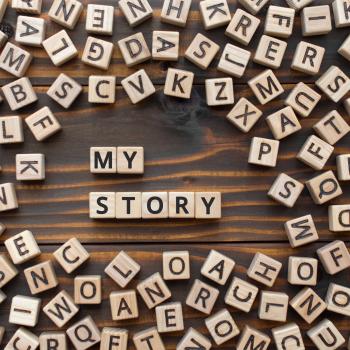Students explore The Great Gatsby's allusion to art and its use of visual imagery and conclude their study by designing their own cover for the novel.

Judging a Book by its Cover: The Art and Imagery of The Great Gatsby

Grades
|
Entering History: Nikki Giovanni and Martin Luther King, Jr.
6 - 8
Lesson Plan
| Standard Lesson
Nikki Giovanni's poem "The Funeral of Martin Luther King, Jr." is paired with Dr. King's "I Have a Dream" speech, taking students on a quest through time to the Civil Rights movement.

Grades
|
Preparing a Character for a New Job: Character Analysis through Job Placement
9 - 12
Lesson Plan
| Standard Lesson
Working as career counselors for a literary character, students find a job for the character, prepare a resume, and design questions and answers to prepare them for a job interview.

Grades
|
Travel Brochures: Highlighting the Setting of a Story
6 - 8
Lesson Plan
| Standard Lesson
Readers are often transported to the places mentioned in texts through words and descriptions. This lesson invites students to create travel brochures about the setting of texts they have read.

Grades
|
Searching for Gold: A Collaborative Inquiry Project
3 - 5
Lesson Plan
| Unit
Each small group of students researches one aspect of the same big topic, such as the Gold Rush, and teaches what they have learned to the rest of the class.

Grades
|
Book Report Alternative: Creating a Childhood for a Character
6 - 8
Lesson Plan
| Standard Lesson
Students explore familiar literary characters, usually first encountered as adults, but whose childhood stories are only told later. Students then create childhoods for adult characters from books of their choice.

Grades
|
Analyzing Character in Hamlet through Epitaphs
9 - 12
Lesson Plan
| Standard Lesson
Students create epitaphs for characters from a tragedy, such as Hamlet.

Grades
|
From Friedan Forward—Considering a Feminist Perspective
9 - 12
Lesson Plan
| Standard Lesson
Students write letters expressing personal views on issues like equal pay, equal education/employment opportunity, and gender rolesand receive these letters six years later.

Grades
|
Exploring Audience and Purpose with a Single Issue
9 - 12
Lesson Plan
| Standard Lesson
Students explore the concepts of audience and purpose by focusing on an issue that divided Americans in 1925, the debate of evolution versus creationism raised by the Scopes Monkey Trial.

Grades
|
Communicating on Local Issues: Exploring Audience in Persuasive Letter Writing
9 - 12
Lesson Plan
| Standard Lesson
Students will research a local issue, and then write letters to two different audiences, asking readers to take a related action or adopt a specific position on the issue.

Grades
|
A Poem of Possibilities: Thinking about the Future
11 - 12
Lesson Plan
| Standard Lesson
After reading John Updike's "Ex-Basketball Player," students write poems describing themselves five years in the future. The teacher takes the poems and mails them to students in five years.

Grades
|
Blogtopia: Blogging about Your Own Utopia
9 - 12
Lesson Plan
| Standard Lesson
Students work together to create their own utopias, using blogs as the primary source of publication.

Grades
|
Campaigning for Fair Use: Public Service Announcements on Copyright Awareness
6 - 8
Lesson Plan
| Unit
Students explore a range of resources on fair use and copyright then design their own audio public service announcements (PSAs), to be broadcast over the school's public address system.

Grades
|
Finding Common Ground: Using Logical, Audience-Specific Arguments
9 - 12
Lesson Plan
| Minilesson
Using a hypothetical situation, students generate arguments from opposing points of view, discover areas of commonality using Venn diagrams, and construct logical, audience-specific arguments to persuade their opponents.

Grades
|
Alphabiography Project: Totally You
6 - 8
Lesson Plan
| Standard Lesson
The traditional autobiography writing project is given a twist as students write alphabiographiesrecording an event, person, object, or feeling associated with each letter of the alphabet.

Grades
|
From Dr. Seuss to Jonathan Swift: Exploring the History behind the Satire
9 - 12
Lesson Plan
| Standard Lesson
Use Dr. Seuss's The Butter Battle Book as an accessible introduction to satire. Reading, discussing, and researching this picture book paves the way for a deeper understanding of Gulliver's Travels.

Grades
|
Decoding the Dystopian Characteristics of Macintosh's "1984" Commercial
9 - 12
Lesson Plan
| Minilesson
This lesson uses the "1984" Macintosh Commercial to introduce students to dystopian characteristics. Students analyze techniques used in the commercial and identify the comments that it makes about contemporary society.

Grades
|
Book Report Alternative: A Character's Letter to the Editor
6 - 8
Lesson Plan
| Standard Lesson
Students write a persuasive letter to the editor of a newspaper from a selected fictional character's perspective, focusing on a specific issue or situation explored in the novel.

Grades
|
Persuading an Audience: Writing Effective Letters to the Editor
9 - 12
Lesson Plan
| Standard Lesson
Students use persuasive writing and an understanding of the characteristics of letters to the editor to compose effective letters to the editor on topics of interest to them.

Grades
|
Finding the Science Behind Science Fiction through Paired Readings
6 - 8
Lesson Plan
| Standard Lesson
Students read science fiction texts and then use nonfiction texts to extrapolate the scientific principles presented as they discuss the "what ifs" within the context of scientific principles.